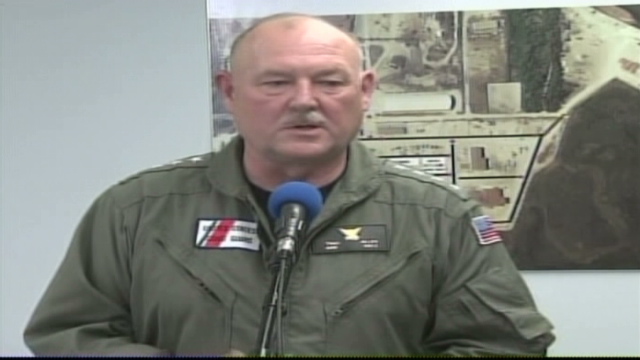 Pensacola, Florida (CNN) -- About 250,000 gallons of oil have been funneled from a ruptured well in the Gulf of Mexico, BP says. That's less than a third of the 798,000 gallons of crude federal authorities estimate are gushing into the ocean every day.
Pensacola, Florida (CNN) -- About 250,000 gallons of oil have been funneled from a ruptured well in the Gulf of Mexico, BP says. That's less than a third of the 798,000 gallons of crude federal authorities estimate are gushing into the ocean every day.
BP collects 250,000 gallons from well, but oil still flows into Gulf
By-the CNN Wire Staff
International News
00:06
Sunday ,06 June 2010

After many failed attempts, BP was able to place the cap on the well this week and begin siphoning oil onto the drill ship Discover Enterprise. Engineers hope to funnel more oil but must be careful about the pressure within the cap, said Coast Guard Adm. Thad Allen, the federal government's response manager.
Once the pressure is eased, BP plans to shut down valves in the cap, which are allowing oil to escape, Allen said Saturday. Company officials said they hope closing the vents will greatly reduce the amount of oozing crude. The operation has the capability of capturing 630,000 gallons a day.
Oil has already affected coastal areas of Louisiana, Mississippi and Alabama, and winds have pushed oil as far east as the Florida Panhandle. Tar balls have been spotted along the white beaches of Pensacola, Florida.
The oil slick has threatened sensitive ecosystems along the Gulf Coast. Dolphins have washed up dead. Sea turtles and brown pelicans, classified as endangered until recently, are showing up on the shore covered in oil.
"It's brutally unfair. It's wrong," President Obama said Saturday in his weekly address, recorded the day before in Grand Isle, Louisiana. "And what I told these men and women -- and what I have said since the beginning of this disaster -- is that I'm going to stand with the people of the Gulf Coast until they are made whole."
Obama said the federal government is "prepared for the worst," and noted there are 17,500 National Guard troops authorized for deployment; 20,000 people working to protect waters and coastlines; 1,900 vessels in the Gulf assisting in the clean up; 4.3 million feet of boom deployed with another 2.9 million feet available, enough to stretch over 1,300 miles; and 17 staging areas across Louisiana, Mississippi, Alabama and Florida to rapidly defend sensitive shorelines.
The National Oceanic and Atmospheric Administration on Saturday closed a 2,275-square-mile area off the Florida Panhandle, extending the northern boundary just east of the western edge of Choctawhatchee Bay. But after reviewing images and data, the agency also reopened more than 13,000 square miles just west of the Florida Keys and Dry Tortugas for fishing.
The adjustments leave 32 percent of the Gulf off limits for fishing; before Saturday's modifications, 37 percent of the water was closed.
The BP well erupted after an explosion and fire on the Deepwater Horizon drilling rig on April 20. Eleven people on board died, and the BP-leased rig sank two days later, leaving up to 19,000 barrels (798,000 gallons) of oil pouring into the Gulf daily, according to federal estimates.
BP has struggled to contain the gushing oil, trying myriad methods to plug the well and divert the crude.
Thursday was the first time the British oil giant was able to report progress when it successfully lowered a containment cap on the ruptured well. Even if the funneling procedure is able to contain most of the oil, the solution is temporary, Allen said. The gushing well can only be killed after BP completes drilling two relief wells.
Allen said the first relief well is about 7,000 feet below the ocean floor. BP will have to go down to between 16,000 and 18,000 feet to be able to intercept the breached well.
The long-term threat, Allen said, will not go away until a relief well is completed. BP has said the earliest that will be done is August.


